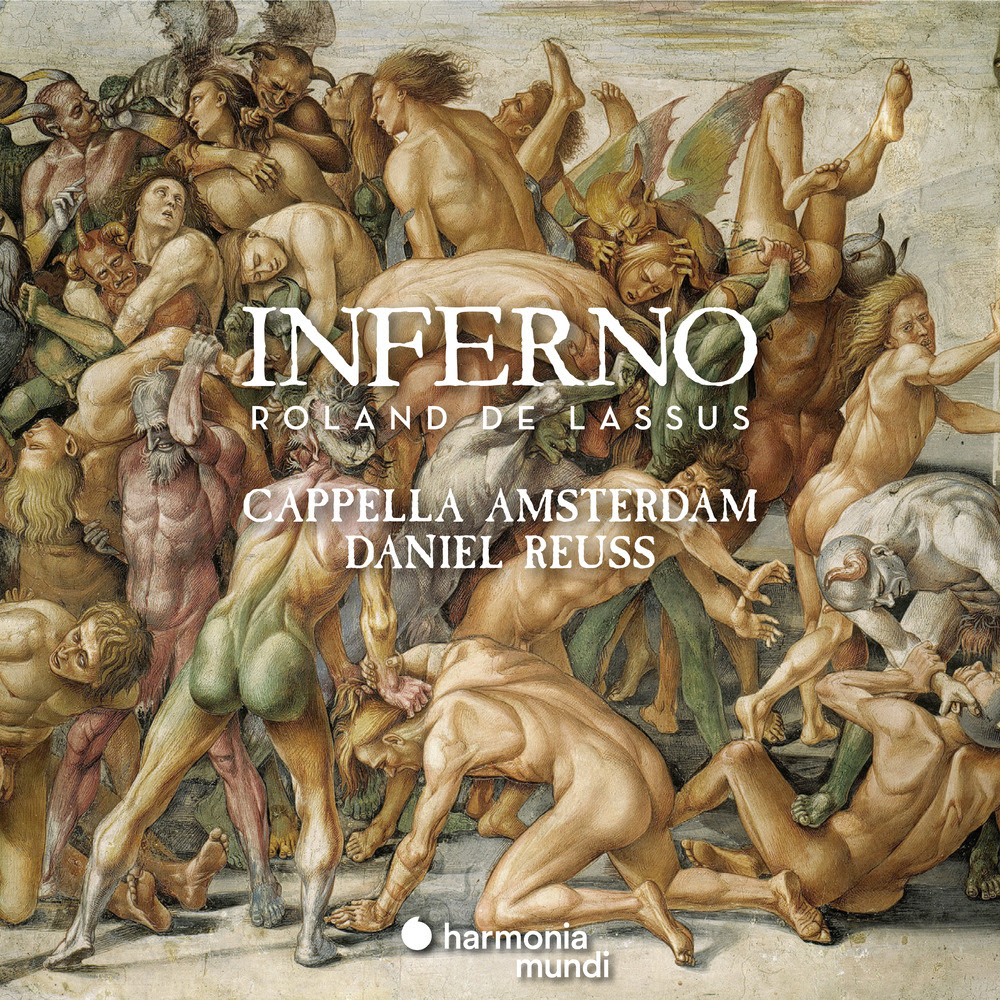Program: #20-44 Air Date: Oct 19, 2020
To listen to this show, you must first LOG IN. If you have already logged in, but you are still seeing this message, please SUBSCRIBE or UPGRADE your subscriber level today.
The latest from the Cappella Amsterdam, “Laudate Dominum” from the Studio de Musique Ancienne in Montreal, and more of the Psalms from Die Singphoniker.
I. Orlando di Lasso: Laudate Dominum (Studio de Musique Ancienne de Montreal/Andrew McAnerney). Atma CD ACD2 2746.
The Studio de musique ancienne de Montréal consists of 10 to 13 singers chosen for the remarkable clarity and purity of their voices. The ensemble is often accompanied by period instruments in performances of Renaissance and Baroque choral masterpieces, and has made 20 widely acclaimed recordings, including several on the ATMA label.
 Lassus, Orlando de : Laudate Dominum omnes gentes, motet for 12 voices, M. xviii (S. xxi/152)
Lassus, Orlando de : Laudate Dominum omnes gentes, motet for 12 voices, M. xviii (S. xxi/152) Lassus, Orlando de : Bone Jesu verbum patris, motet for 8 voices, M. xxi (S. xix/154)
Lassus, Orlando de : Bone Jesu verbum patris, motet for 8 voices, M. xxi (S. xix/154) Lassus, Orlando de : Cantiones sacrae à 6 (30)
Lassus, Orlando de : Cantiones sacrae à 6 (30) Lassus, Orlando de : Te Deum laudamus, motet for 6 voices, M. vi (S. xix/24)
Lassus, Orlando de : Te Deum laudamus, motet for 6 voices, M. vi (S. xix/24) Lassus, Orlando de : Dixit Martha, motet for 9 voices, M. xviii (S. xxi/98)
Lassus, Orlando de : Dixit Martha, motet for 9 voices, M. xviii (S. xxi/98) Lassus, Orlando de : Mira loquor sed digna fide, motet for 10 voices, M. xviii (S. xxi/126)
Lassus, Orlando de : Mira loquor sed digna fide, motet for 10 voices, M. xviii (S. xxi/126) Lassus, Orlando de : Domine Dominus noster, motet for 6 voices, M. xviii (S. xvii/39)
Lassus, Orlando de : Domine Dominus noster, motet for 6 voices, M. xviii (S. xvii/39) Lassus, Orlando de : Alma Redemptoris mater
Lassus, Orlando de : Alma Redemptoris mater Lassus, Orlando de : Beatus Nicolaus, motet for 8 voices, M. xviii (S. xxi/23)
Lassus, Orlando de : Beatus Nicolaus, motet for 8 voices, M. xviii (S. xxi/23) Lassus, Orlando de : Omnia tempus habent, motet for 8 voices, M. xv (S. xxi/77)
Lassus, Orlando de : Omnia tempus habent, motet for 8 voices, M. xv (S. xxi/77) Lassus, Orlando de : Laudate Dominum quoniam bonus est, motet for 7 voices, M. vi (S. xix/106)
Lassus, Orlando de : Laudate Dominum quoniam bonus est, motet for 7 voices, M. vi (S. xix/106) Lassus, Orlando de : Musica Dei donum optimi, motet for 6 voices, M. xvi (S. xix/63)
Lassus, Orlando de : Musica Dei donum optimi, motet for 6 voices, M. xvi (S. xix/63) Lassus, Orlando de : Aurora lucis rutilat, motet for 10 voices, M. xxii (S. xxi/119)
Lassus, Orlando de : Aurora lucis rutilat, motet for 10 voices, M. xxii (S. xxi/119)II. Orlando di Lasso: Psalms (die Singphoniker) CPO CD 555 264-2.

CD 1: Psalmus I - IV
1Primus Psalmus
2Secundus Psalmus
3Tertius Psalmus
4Quartus Psalmus
CD 2: Psalmus V - VII & Laudes Domini
1Quintus Psalmus
2Sextus Psalmus
3Septimus Psalmus
4Laudes Domini
III. Roland de Lassus: Inferno (Cappella Amsterdam/Daniel Reuss). Harmonia Mundi CD HMM 902650.

The same playfulness appears in track 10, a setting of Paul’s first letter to the Corinthians, as the lower voices use a full tone to represent Paul speaking as himself, while the upper voices stick to a lighter sound to sing the refrain “as a child.” Even when singing the most conservative track on the album, a Gregorian antiphon (track 4) that serves as a prelude to a Lassus setting of the same (track 5), there is elegance in place of the rigidity that often accompanies Gregorian chant. The tenors, singing by themselves, indulge in small shimmers of vibrato on the word “sancte” (“holy”), and phrases have momentum. We hear the antiphon as the bitter reflection that it is, not just notes in a row.
Neither, on the other hand, is Reuss guilty of imposing his will on every piece. The pieces with more straightforward structures are let to unfold more uniformly, undisturbed by explicit artistic choices (tracks 5 and 9, for example). Additions of very subtle phrasing enhance Lassus’ melodies.
The choir, a sixteen-voice subset of the full Cappella, is in excellent technical form throughout the album. Vocal parts are doubled and intonation within each pair is precise, like a dance troupe moving in perfect unison. The polyphony emerges like calligraphy from the parts’ interactions, and the harmonic relations between the parts are no less precise. Each fifth is tall and supple, and the thirds remarkably warm. The low end is particularly impressive, and has been captured carefully by the engineers. These basses sound just as resonant on the lower half of the staff as the upper, their voices not losing any warmth or strength (e.g. track 6), and their occasional moments of close harmony are never muddied.
Recorded in the Waalse Kerk (Walloon Church) in Amsterdam, the album’s acoustics are a delicious balance of up-close and resonant. The singers sound truly velvety, even in forceful moments. I struggle to remember the last time I heard a choir recorded this well — Les Cris de Paris’ superb “passions” comes close, also (perhaps not surprisingly) from Harmonia Mundi. This album should be more than sufficient to win over any Renaissance-choral-music skeptics, and will provide those of us who are already converts with many happy hours.
Omnia tempus habent
Audi tellus
Ad Dominum cum tribularer
Media vita in morte sumus
Circumdederunt me dolores mortis
Libera me Domine
Recordare Jesu pie
Deficiat in dolore vita mea
Vidi calumnias
O mors quam amara
Cum essem parvulus
Vide homo
Composer Info
Orlando di Lasso
CD Info
Atma CD ACD2 2746, CPO CD 555 264-2, CD HMM 902650